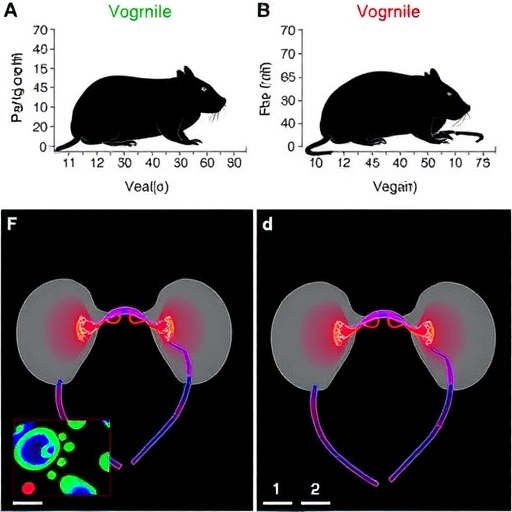For decades, regional anesthesia methods such as spinal and epidural blocks have dominated cesarean deliveries due to concerns surrounding the potential adverse impacts of general anesthesia on newborns. Beyond clinical considerations, cultural and societal expectations also strongly influence the preference for mothers to remain awake during childbirth, capturing the emotionally charged “first moments” of their child’s life. However, emerging research from the Perelman School of Medicine at the University of Pennsylvania challenges the entrenched assumption that regional anesthesia is the only safe or acceptable option for cesarean delivery. Their latest findings, published in the respected journal Anesthesiology, suggest that general anesthesia may represent a viable alternative for many women, particularly those who experience significant pain despite spinal or epidural blocks.
The conventional wisdom that regional anesthesia is the gold standard for cesarean sections is predicated largely on the assumption that it minimizes neonatal complications, while affording mothers the chance to be conscious during delivery. Yet, clinical experiences and patient testimonies increasingly reveal that for up to one in six patients, the analgesic effect of spinal or epidural anesthesia is insufficient, resulting in considerable intraoperative pain. This pain, often described as excruciating, not only affects the immediate surgical experience but can also produce long-lasting psychological trauma. It is within this context that the University of Pennsylvania research team embarked on a comprehensive analysis, aiming to reassess anesthesia paradigms through a data-driven lens spanning multiple decades and diverse international clinical trials.
Their systematic meta-analysis scrutinized approximately 30 years of existing data comparing outcomes of general anesthesia versus regional techniques during cesarean sections. One key neonatal metric evaluated was the Apgar score, a well-established indicator of newborn well-being assessing heart rate, respiration, muscle tone, reflex response, and color within minutes after birth. While the study reaffirmed that regional anesthesia correlates with marginally higher Apgar scores immediately postpartum compared to general anesthesia, the differential was clinically modest and unlikely to translate into significant long-term health disparities. Notably, babies delivered under general anesthesia showed a slightly increased requirement for immediate respiratory support, though this did not correspond to higher rates of admission to neonatal intensive care units (NICUs).
Crucially, the research underscores that while regional anesthesia should remain the recommended first-line approach for cesarean deliveries due to its favorable neonatal safety profile and maternal benefits, general anesthesia need not be dismissed as inherently dangerous or suboptimal. Enhanced anesthesia management protocols and modern anesthetic agents have mitigated many historical risks associated with general anesthesia, making it a plausible option for patients who either cannot tolerate regional blocks or for whom these regional techniques fail to provide adequate analgesia. The findings thus open the door for more individualized analgesic strategies that prioritize patient comfort and informed choice without compromising neonatal outcomes.
The study’s senior author, Dr. Mark Neuman, Horatio C. Wood Professor of Anesthesiology, emphasized that anesthesia types during pregnancy do not have to adhere to a one-size-fits-all formula. This message is especially poignant given the widespread societal pressure on women to endure childbirth pain silently while remaining fully aware during delivery. By acknowledging that general anesthesia can be safely and effectively administered in appropriate cases, the study fosters a more patient-centered conversation about birthing experiences, validating the diverse preferences and physiological responses of pregnant individuals.
The significance of this research is amplified by recent heightened public discourse regarding painful cesarean birth experiences. Increasingly, women have used media platforms—news articles, podcasts, and social media—to courageously share their stories about distressing intraoperative pain despite receiving spinal or epidural blocks. These candid narratives have spotlighted the gap between clinical guidelines and lived experiences, compelling the medical community to reexamine anesthetic protocols critically. Sarah Langer, MD, a lead author and anesthesiology resident involved in the study, remarked that their findings equip patients with evidence-based knowledge about anesthesia options, empowering them to make more informed decisions and engage in open dialogues with their care providers.
From a technical standpoint, the physiology underpinning the choice of anesthesia during cesarean births involves weighing analgesic efficacy against potential neonatal exposure to pharmacologic agents crossing the placenta. Spinal and epidural anesthesia typically involve local anesthetics injected near the spinal cord, providing robust sensory blockade that spares consciousness. In contrast, general anesthesia induces reversible unconsciousness with systemic delivery of anesthetic gases or intravenous agents, which can transiently depress neonatal respiratory function. However, advancements in anesthetic pharmacology and airway management have minimized neonatal respiratory depression risks traditionally associated with general anesthesia. This evolution reflects a paradigm shift in balancing maternal comfort with neonatal safety.
The study also highlights a noteworthy limitation in global obstetric anesthesia research: much of the existing data originates from countries outside North America, suggesting a need for more U.S.-based clinical trials to validate and contextualize these findings within diverse healthcare settings. Furthermore, historical ethical and regulatory constraints around enrolling pregnant women in clinical trials have perpetuated a relative paucity of rigorous research data in this population, underscoring the importance of expanding safe, well-designed obstetric anesthesia studies moving forward.
Importantly, this research advances a nuanced narrative that reframes anesthesia not as a binary choice between good and bad options, but as a continuum tailored to individual patient needs. Recognizing that some women confront profound pain under spinal or epidural blocks and would benefit from alternative approaches is a critical step toward more humane, compassionate maternity care. By fostering honest discussions about the risks and benefits of all anesthesia modalities, clinicians can help dismantle stigma and empower patients to advocate for their comfort and well-being during one of life’s most vulnerable moments.
The findings also provoke reflection on the broader systemic issues influencing childbirth experiences, such as institutional attitudes toward pain management, patient autonomy, and cultural expectations. Integrating these research insights into obstetric anesthesia practice may prompt hospitals and providers to reevaluate protocols, improve pain assessment tools, and strengthen shared decision-making frameworks. Such transformations have the potential to enhance not just clinical outcomes but also the psychological and emotional dimensions of cesarean deliveries.
In sum, the University of Pennsylvania’s research offers a pivotal contribution to obstetric anesthesiology by rigorously interrogating established norms around anesthesia choice in cesarean births. While confirming the safety and efficacy of spinal and epidural anesthesia as preferred methods, it simultaneously legitimizes general anesthesia as a reasonable option when clinically indicated or desired by the patient. This balanced perspective heralds a new era in maternity anesthesia care, one that honors both medical science and individual patient experience.
Ultimately, no woman should have to endure the agony of surgical pain during cesarean delivery, nor feel constrained by societal pressures that dictate a singular anesthetic route. Thanks to this landmark study, the conversation around anesthesia options in cesarean births is becoming more inclusive, evidence-based, and patient-focused—offering hope for better pain management and more positive childbirth memories for mothers worldwide.
Subject of Research: Anesthetic techniques and neonatal outcomes in cesarean section delivery
Article Title: University of Pennsylvania Study Explores General Anesthesia as a Viable Option for Cesarean Sections
News Publication Date: 2024
Web References:
American Society of Anesthesiologists – Anesthesiology Journal
Recent Study on Pain During Cesarean Section
Podcast on Cesarean Pain Experiences
News Article on Cesarean Pain
Keywords: Cesarean birth, anesthesiology, childbirth, regional anesthesia, general anesthesia, neonatal outcomes, pain management, obstetrics
Tags: alternatives to regional anesthesiacesarean delivery pain managementcultural perceptions of childbirth anesthesiaemotional aspects of childbirthgeneral anesthesia for C-sectionsmaternal health and anesthesia choicesneonatal complications of anesthesianew research in anesthesiapatient experiences during childbirthPerelman School of Medicine studyregional anesthesia vs general anesthesiaspinal and epidural anesthesia effectiveness






